MIPAS/TELIS
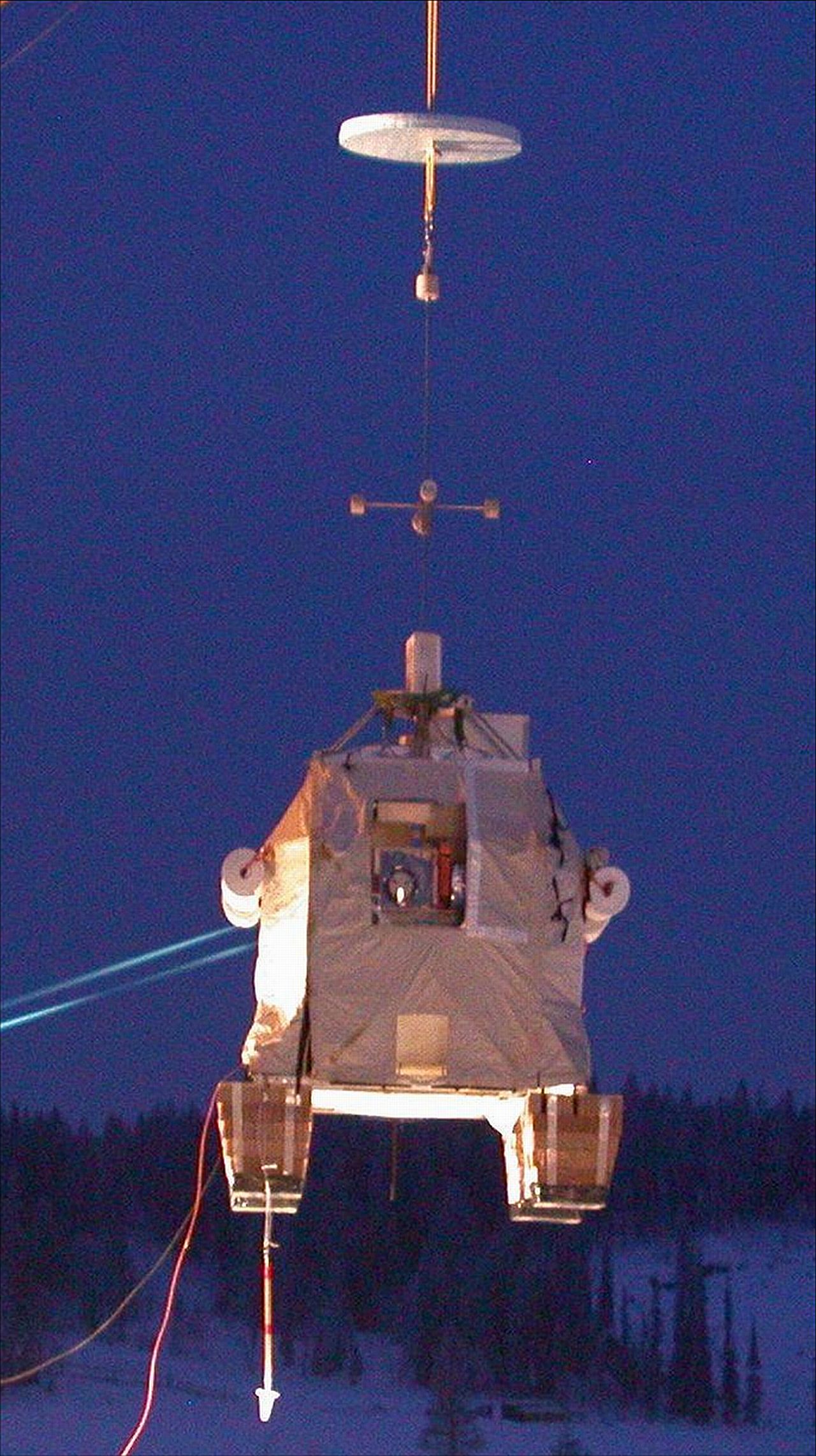 MIPAS gondola MIPAS gondola |
Remote sensing payload covering frequencies from the UV to the sub-mm region. Pointed gondola. Pointing reference based on GPS-aided inertial navigation system and torque controlled azimuth, along with CCD star camera as absolute reference (only at night). Same pointing reference used by MIPAS-B and TELIS. All remote sensing instruments point at the same airmasses. Free choice of elevation and azimuth of line of sight tailored to the scientific objective. Comprehensive measurements of source gases, reactive species, aerosol/cloud parameters and temperature. More than 40 species measured, about a third of them by more than one sensor on the same gondola (cross-comparison). Payload flown in the same configuration already three times. Synergy by combination of various frequency ranges, e.g. for closing budgets, spectroscopy issues, penetration into clouds, sensitivity to non-LTE processes. MIPAS and TELIS can measure day and night, ideally suited for studying photochemistry of short-lived species. Continuous measurement during ascent and from ceiling altitude. |
TWIN/HALOX-B/BONBON/Pico-SDLA
| TWIN is an in-situ payload carrying instrumentation from German and French institutions. It measures chemically active species like ClO, it's dimer ClOOCl, and BrO and possibly the halogen reservoir species ClONO2 by converting these to chlorine and bromine atoms, which are then measured by resonance fluorescence. The source gases for halogens in the stratosphere are measured by whole air sampling (15 samples at different altitudes) with subsequent analysis in the laboratory. The species measured include more than 99% of the known chlorine source gases and all long lived bromine source gases, allowing to derive total reactive chlorine and bromine (Cly and Bry). Combining this with the measurement of chemically active species gives information on the chemical partitioning in the stratosphere and testing of stratospheric chemistry schemes. Dynamical tracers with different lifetimes and characteristics are measured by the whole air sampler and by pico-SDLA (quantum cascade laser spectroscopy). This information is used to study stratospheric transport and mixing based on e.g. tracer-tracer correlations. In addition there will be an ozone-sonde aboard the payload. | |
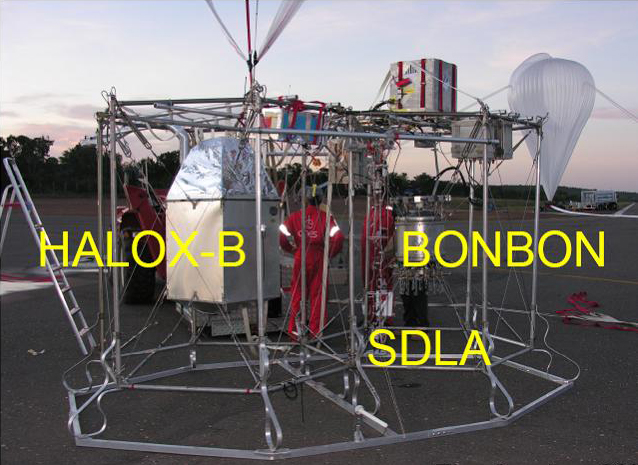
TWIN gondola |
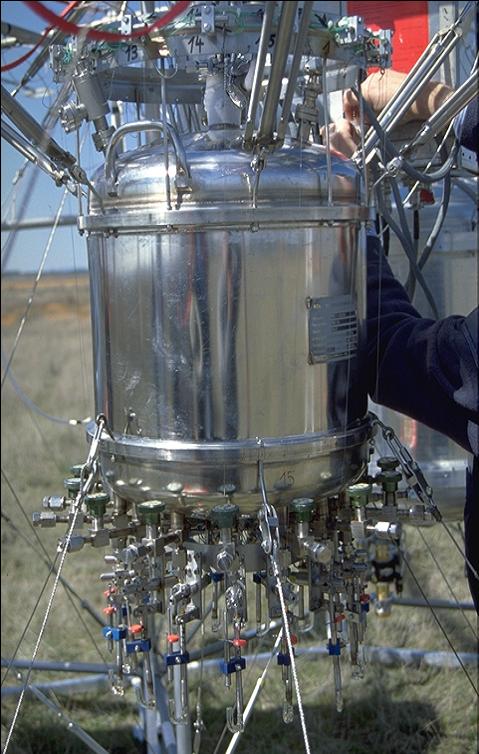
BONBON |
LPMA/DOAS/miniDOAS
LPMA (Limb Profile Monitor of the Atmosphere) is a Fourier transform spectrometer covering 4 spectral window in the mid infrared (13 mm to 2.4 mm). The DOAS (Differential Optical Absorption Spectroscopy) instruments are grating spectrometers that cover the UV/Vis spectral range between about 320 and 650 nm. The gondola's azimuth control is operated by "CNES nacelles pointées". The measurement are done during ascent and sunset (or sunrise) using the sun as a source. The vertical mixing ratios are retrieved from 15 km to the balloon float altitude with a vertical resolution around 1 km. 26 successful flights from different latitude and with different optical configuration have already been done. The last flight was performed in Kiruna in April 2010.
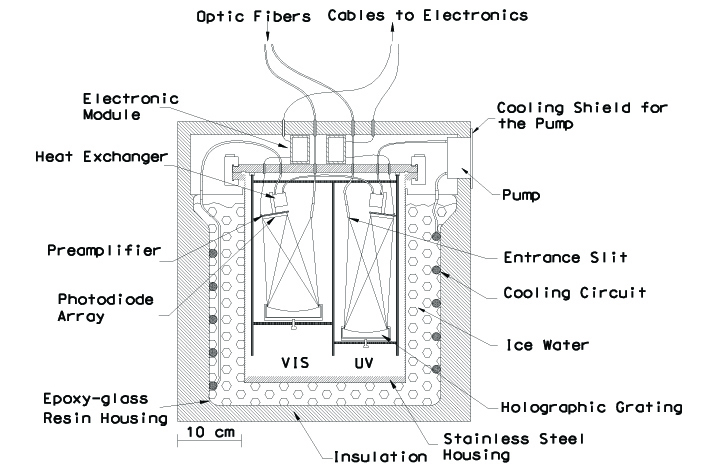
DOAS |
SPIRALE/OFCEAS
| SPIRALE (SPectromètre InfraRouge par Absorption de Lasers Embarqués): in situ sensing
payload using six laser diodes covering spectral micro-windows (< 1 cm-1) in the mi-infrared
region from 3 to 13 μm (770-3300 cm-1). Highly spatially-resolved on-line simultaneous
measurements of more than 8 trace gas species. Remote system allowing for on-line controlling
of the optical alignment and the laser emissions. Continuous measurements during ascent,
ceiling altitude and descent. Detection limit better than 30 pptv in volume mixing ratios
depending on the species ro-vibrational line intensity, thanks to the long path (> 400 m)
Heriott absorption optical cell and to the high performance house-made electronics. 9 successful
flights over 9 flights performed between 1999 and 2009, at various latitudes: Aire/l'Adour
and Gap (France, 44ºN), Kiruna (Sweden, 68ºN), Teresina (Brazil, 5ºS).
Measurements at day and night ideally suited for studying photochemistry and transport.
OFCEAS (Optical Feedback Cavity Enhanced Spectroscopy): in situ compact analyzer working with a DFB diode laser at 2325 nm, capable of CO and CH4 simultaneous measurements down to 1 pbbv concentration levels at 1 Hz. The high finesse cavity allows effective path lengths of the order of 10 km with a 50 cm long cell (20 cm3 internal sample volume). Local air is flown through this cavity, delay from sample inlet is known from flow rate. Automatic continuous measurement from ground to ceiling and back, with logging on flashdisk. New balloon instrument: no flight to date. A similar setup (Groningen University + Grenoble University & CNRS) successfully operated as Geophysica payload (4 flights during AMMA 2006 campaign). |
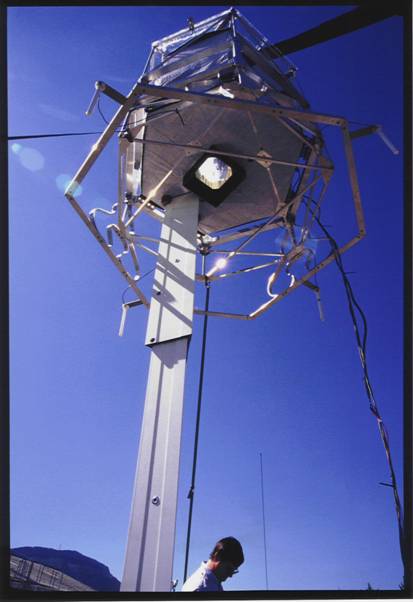
SPIRALE gondola |
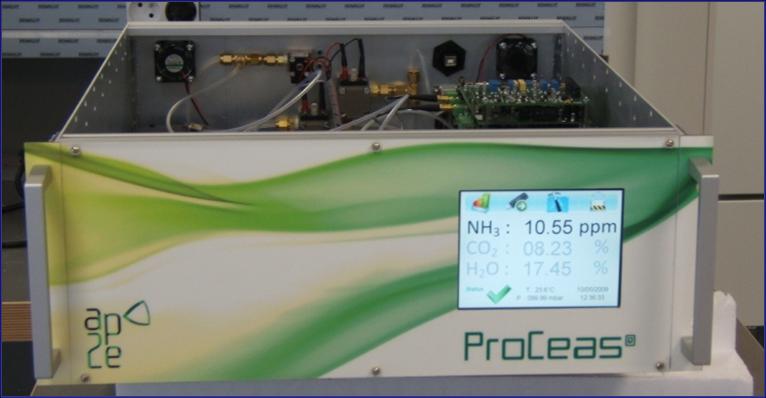 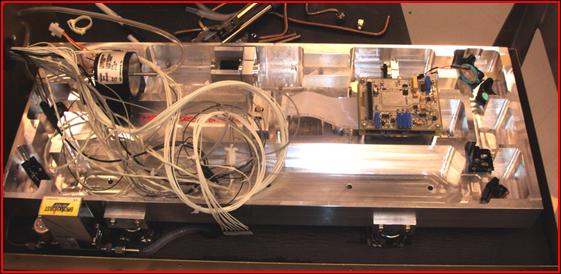
OFCEAS |
|

















